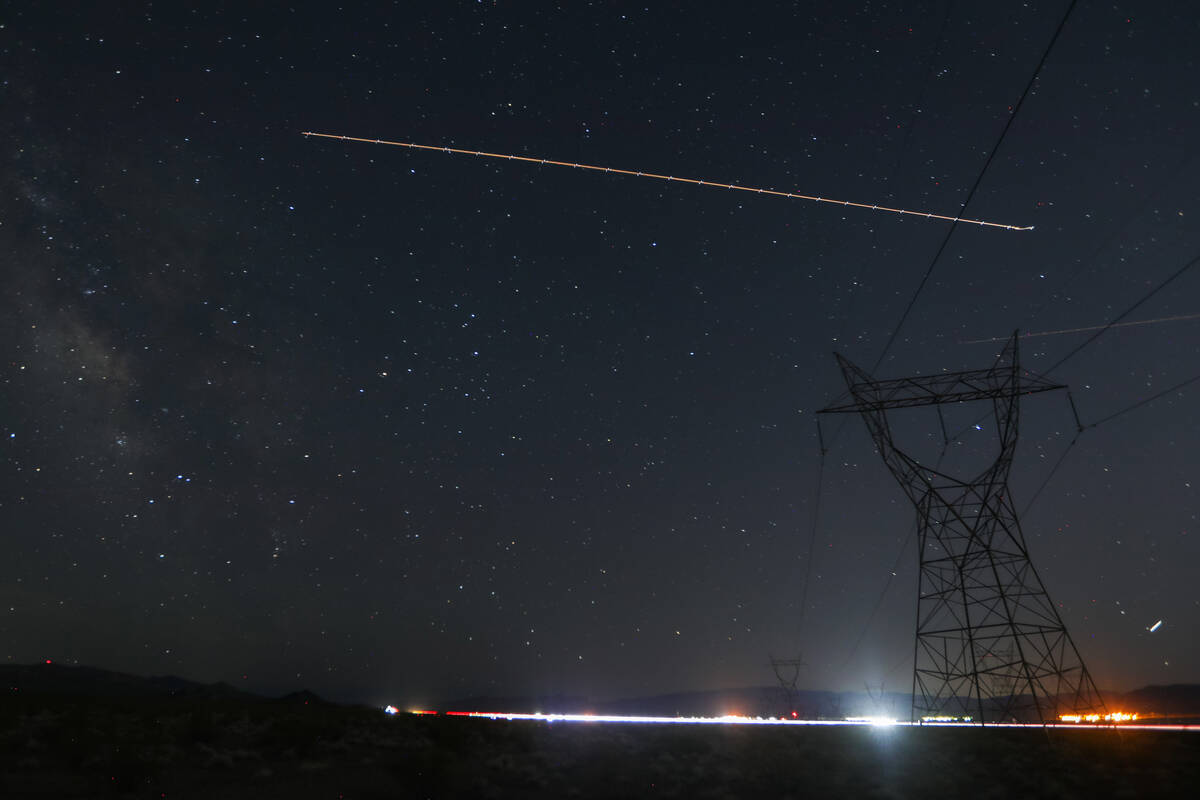
Boulder City has been working in conjunction with the Nevada Department of Outdoor Recreation to retrofit their outdoor lighting to get closer to compliance with Dark Sky International.
Ashley Pipkin, an outdoor recreation planner for the National Park Service and a community science fellow with Boulder City, said community members had voiced concerns about their lights.
Pipkin says it was great to hear a community caring about the issue.
Boulder City Utilities Director Joe Stubitz said in a statement that the city was excited to partner with the National Park Service and the Nevada Division of Outdoor Recreation to receive a $1.9 million grant from the U.S. Economic Development Administration.
The grant was able to help Boulder City purchase lighting that is friendlier to the night sky, according to Pipkin.
The lights that Boulder City is planning on introducing have a warm color temperature, which produces less glare, is less harmful to wildlife and better for the elderly.
The new outdoor lighting coming to Boulder City is a testament to how cities are working to continue to reduce light pollution.
Light pollution is the excessive or poor use of artificial outdoor light, according to National Geographic.
Kevin Swartz, vice president of the Las Vegas Astronomical Society, says that light pollution is a big problem in the valley, and that the Sphere isn’t quite helping.
“It wastes tons of energy and it creates health concerns,” he said. “It also has a large impact on wildlife. That grasshopper invasion we had back in 2019? Grasshoppers are attracted to light so they just flocked to where they saw the most light, and that was the Strip.”
According to a study conducted in 2021, global light pollution has increased by at least 49 percent over the past 25 years. University of Nevada Reno professor Jenny Ouyang told the Review-Journal that by 2025, 80 percent of the world’s population will live in light-polluted cities.
“Plenty of studies show that excess light pollution can cause hormone-related cancers, immune deficiencies and melatonin deficiencies,” Ouyang said.
Light pollution is just like any other pollutant in the environment, but is severely understudied, according to Ouyang. It’s a relatively new concept that researchers are still learning more about.
In an essay for American Scientist magazine, she warned that as urbanization continues to increase, “there are more and more of us who will never see the Milky Way, who will never look to the stars to ponder our place among the galaxies.”
But the increased awareness to the issue of light pollution has also introduced more people to the concept of dark sky communities.
^
Dark sky communities
The International Dark Sky Association is the recognized authority on light pollution, and the leading organization working to combat light pollution worldwide.
The organization also designates official dark sky communities around the world, or cities or towns that are dedicated to preserving the night sky, through education and the implementation of special lighting ordinances.
Nevada has two Dark Sky designations: Great Basin National Park and Massacre Rim Park, both in the northern part of the state, away from the lights of Las Vegas.
One way that Great Basin has stayed in compliance with International Dark Sky Association rules is by changing its outdoor lighting fixtures to red light.
“We have red lights that cover the walkways and red lights for the bathrooms,” Bradley Mills, Great Basin’s lead astronomy ranger, said. “We make sure our lights are on timers or motion detectors, or pointed specifically at the ground so there is no light residue in the sky.”
Many people actually go out to Great Basin to see the starry night sky that they can’t get in their urbanized cities, according to Great Basin Superintendent James Woolsey.
“In general, dark night sky tourism has picked up for us,” Woolsey said. “Fifteen to 20 percent of all visitors come for our dark skies. We measure this by how many of our visitors come to evening festivals built around stargazing.”
One of those evening events is the Star Train, held in collaboration with the Northern Nevada Railway Museum, which takes tourists on a guided train ride through the park to view the starry sky.
Mills recalled one tour of around 120 people, where only one person raised their hand when asked if they’d ever seen the Milky Way before.
“It’s an amazing place, you can look up on any night and see the tremendous beauty,” Mills said. “I love being able to share it with everyone. So many people who come here have never seen the Milky Way or the night sky and so when they look through our telescopes at the sky, we hear a lot of ‘ohs’ and ‘wows.’”
But even Great Basin isn’t immune to light pollution. From some areas of the park, city lights from Salt Lake City and Las Vegas can be seen off in the distance, according to Mills.
While the glow of city lights is always going to be a staple in this area, Ouyang has said that light pollution isn’t all doom and gloom, and that there is a simple fix to combat light pollution that everyone can do in their lives: Remember to turn off the lights.
Contact Kiara Adams at kadams@reviewjournal.com or 702-380-0399. Follow @kiadams101 on Twitter.